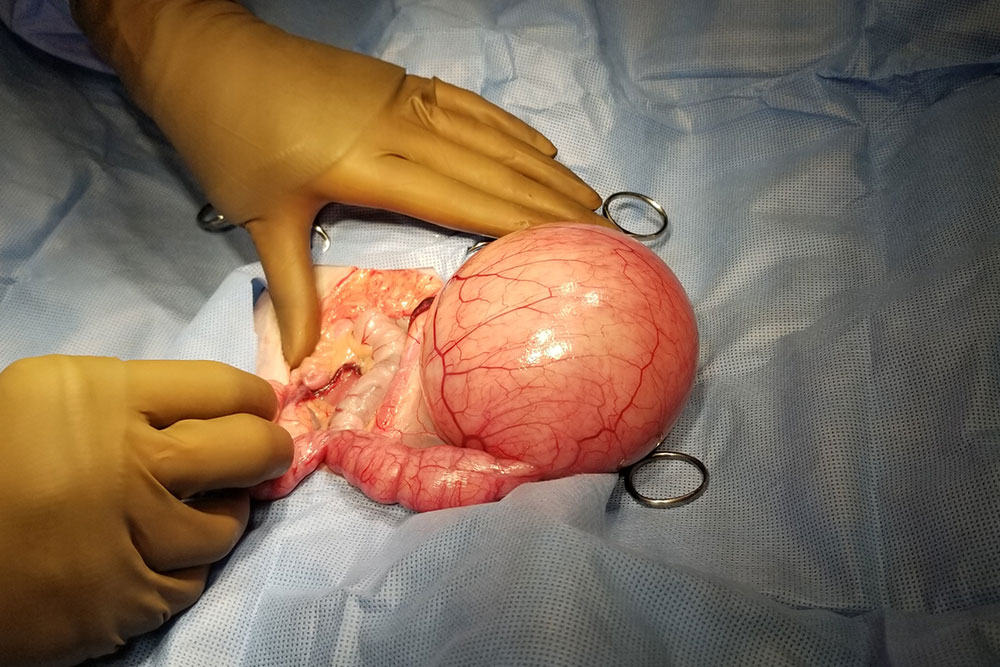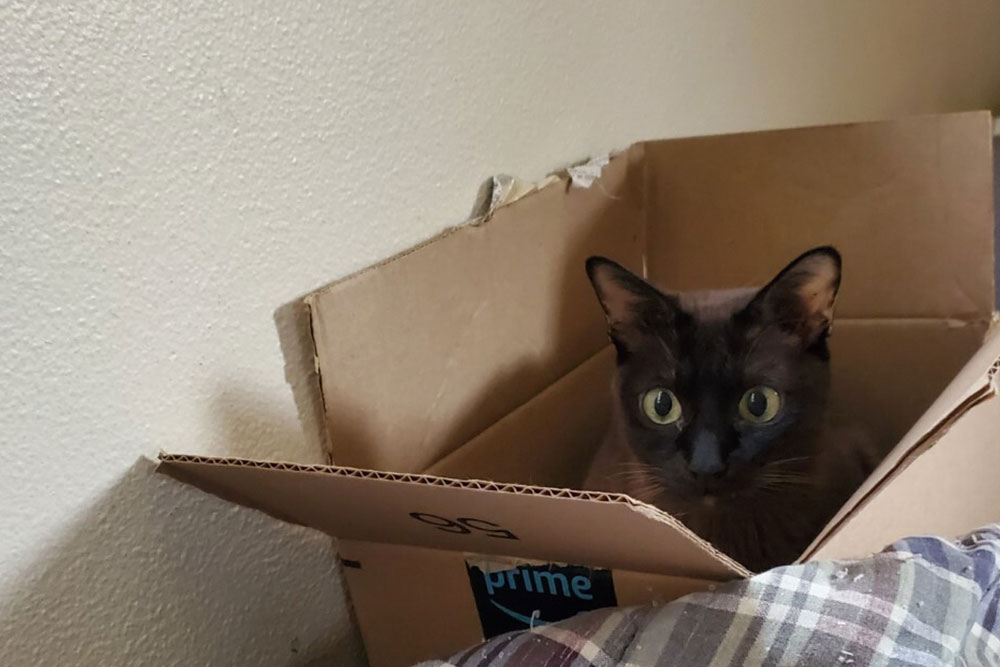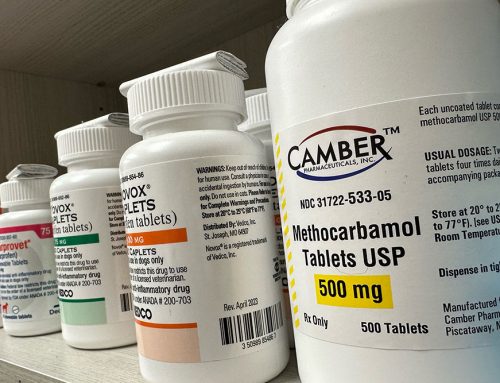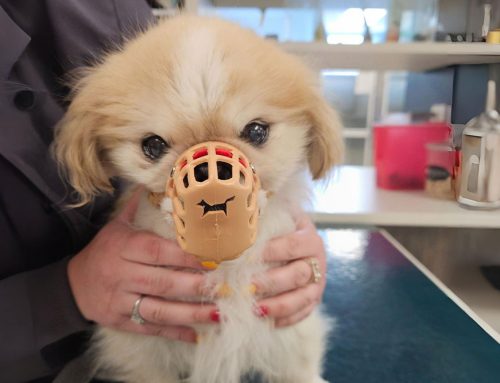
Emergency surgery saved the life of Coco, who developed pyometra. Pyometra develops in the uterus of a pet who has not been spayed.
Coco was aging gracefully until one day, when she suddenly started behaving a little differently. The normally alert queen of the castle became lethargic. Nothing was capturing the interest of the 9-year-old domestic shorthair, including food. But even without eating much, her abdomen was growing larger. How could that be?
Her family took their little kitty to see Dr. Kathy Passinault, hoping she would be able to determine what was making Coco feel sick. It didn’t take long to figure out the problem. An ultrasound showed Coco’s uterus was filled with fluid.
“Whether the patient is a cat or a dog, when the uterus fills with fluid, that means the pet has something called pyometra,” said Passinault. “Pyometra occurs when the uterus becomes infected, and as the infection progresses, fluid builds up.”
The most common symptoms not only include lethargy and lack of interest in eating, but pets affected by pyometra can also have other symptoms like vomiting, excessive consumption of water, excessive urination or diarrhea. Some also might have vaginal discharge.
Coco is a very fortunate cat to be part of such an attentive family, because her people sought help very soon after her symptoms started. “Veterinarians have a saying about this illness,” said Passinault: “Don’t let the sun go down on pyometra.” She explained that the condition is life-threatening. “If the condition goes untreated for too long, there is a high probability fluid will continue to fill the uterus until it reaches the point in which the uterus ruptures. When that occurs, the pet will die.”
The veterinarian staff schedules were already packed when Passinault approached Dr. Michelle McDonough and some staff members to inquire about their lunch plans. McDonough knew the look, and so did the staff members. “Um, by any chance could we join you for an emergency surgery?” McDonough asked.
Passinault grinned, thankful her colleagues were up for a little lunchtime challenge. “I hate to have to send Coco to an emergency clinic if we can squeeze this procedure in,” she told them. And with that, the two doctors and staff were off to the operating room. Once they were able to see inside the abdomen, Coco’s uterine cavity seemed even larger than they first thought when they looked at the ultrasound images.
“Coco is a small cat,” said Passinault. “When she came in that day, she weighed just 5 pounds. Imagine our surprise when after removing her uterus and weighing it, the scale said her uterus was 0.65 pounds. That was 15 percent of her total body weight.” Coco did very well with her surgery, and she was able to go home by that evening.
There is only one reason cats and dogs develop pyometra: They’re females, so they have a uterus. Sterilizing them completely eliminates that health risk. Usually pets are a little older when they get pyometra, but there are other things to consider when pet parents are deciding whether to spay or neuter their pets.

Now that Coco has recovered from her surgery, she is again playing hide and seek. She remains convinced she is invisible if she’s hiding in a Prime box.
“Of course the obvious reason for us to spay and neuter our pets is for basic population control. Too many animals are euthanized, mistreated or neglected simply because of overpopulation,” said Passinault. “Most cats and dogs are extraordinarily good escape artists, so even with the best of intentions to keep pets inside or away from other animals, they can manage a slick escape and become pregnant.”
Female cats and dogs also have increased odds of developing mammary cancer and/or other uterine infections if they aren’t sterilized. Cats are also more likely to spray, causing damage to their homes. That is especially true for male cats, whose urine becomes stinkier as they age.
Typically, the health risks for dogs increase as they age, Passinault said, so even though owners can wait until their pups are a little older, it is best for them to schedule the surgeries when their pets are still young. Unsterilized male dogs face health risks like prostate-related illnesses, cysts and testicular cancer.
Passinault said spaying female cats is best before they have their first heat cycle, because cats can become pregnant when they’re as young as 4 months old. “Pets will get the last of their initial vaccinations when they’re about 4 months old, so that’s a good timeline to aim at for spaying or neutering cats,” said Passinault.
“For dogs, we recommend females get spayed after they have gone through one estrus cycle, but if a family doesn’t want to go through the cycle, then we suggest spaying females at 6 months of age,” she said. “Some newer studies suggest experiencing an estrus cycle before the surgery helps strengthen ligaments and decrease risk of common orthopedic injuries later in life. For that reason, we also recommend waiting until male dogs are between 12 and 18 months old to have their surgeries.”
There may also be different time recommendations based on the dog’s breed. “Even though we have general guidelines, each pet is unique, so making the decision for spaying or neutering is best made with the veterinarian, and for most pets it is the best choice for reducing some kinds of health risks.
For more information, call 414-421-1800, or visit greendalevillagevet.com.






Leave A Comment